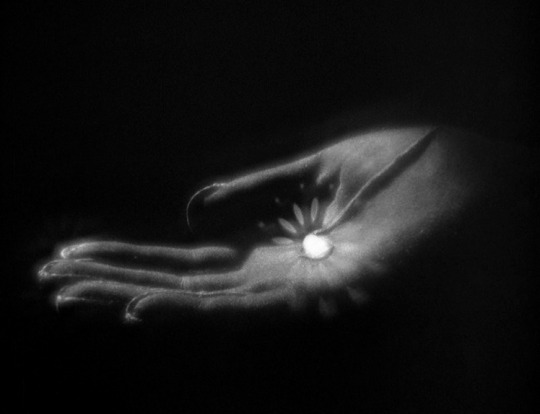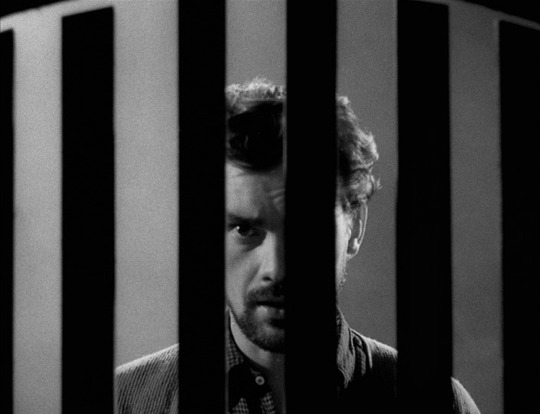#prison (1949)
Text






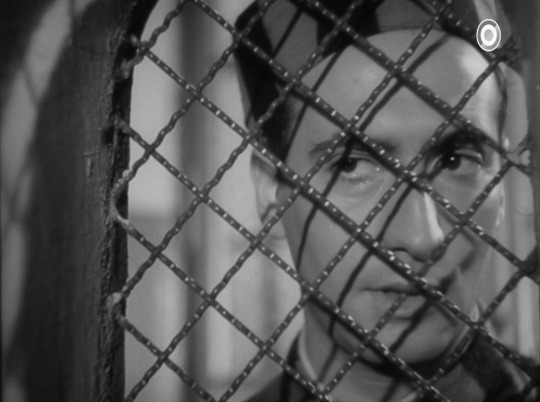



Apenas un delincuente (Hugo Fregonese, 1949)
#Films watched in 2024#Apenas un delincuente#Hugo Fregonese#Fregonese#1949#seis#black and white#prison#Jorge Salcedo#Sebastián Chiola#Tito Alonso#drama#intrigue#film noir#hands#money#blood#jail#facepalm#argentina#crossfades#cross dissolves#double exposure
63 notes
·
View notes
Photo



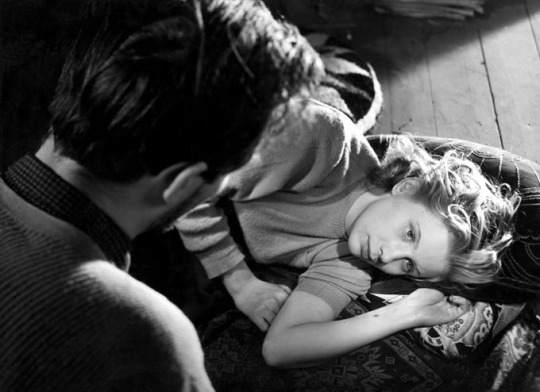






Prison (Fängelse) (1949) - dir. Ingmar Bergman
31 notes
·
View notes
Text

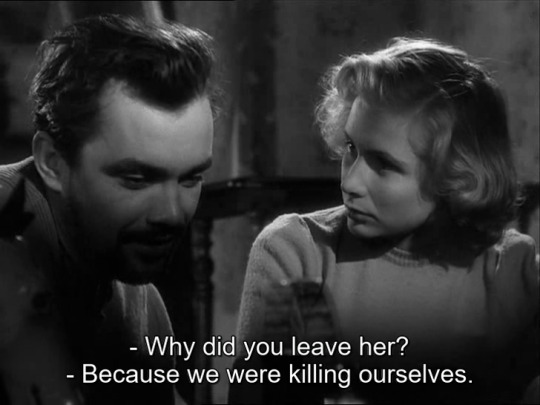
Prison (Fängelse) (1949) - dir. Ingmar Bergman
71 notes
·
View notes
Text
تداعيات انضمام فلسطين للمحكمة الجنائية الدولية على قضية الأسرى
تداعيات انضمام فلسطين للمحكمة الجنائية الدولية على قضية الأسرى
تداعيات انضمام فلسطين للمحكمة الجنائية الدولية على قضية الأسرى
الكاتب : بوخاري خليل
الملخص:
لقد أقر القانون الدولي الإنساني حماية خاصة للأسرى، وتم منحهم كافة الحقوق والواجبات بما فيهم الأسرى الفلسطينيين، وذلك من خلال مجموعة من الاتفاقيات التي تضمنت الحماية الخاصة بأسرى الحرب، وبشأن الأسرى الفلسطينيين، يعتبر انضمام فلسطين إلى المحكمة…

View On WordPress
#International Criminal Court#Israeli Occupation#Palestinian prisoners#Third geneva convention of 1949#فلسطين.#المحكمة الجنائية الدولية. ; Palestine#الأسرى الفلسطينيين#الاحتلال الإسرائيلي#اتفاقية جنيف الثالثة لعام 1949
0 notes
Text
تداعيات انضمام فلسطين للمحكمة الجنائية الدولية على قضية الأسرى
تداعيات انضمام فلسطين للمحكمة الجنائية الدولية على قضية الأسرى
تداعيات انضمام فلسطين للمحكمة الجنائية الدولية على قضية الأسرى
الكاتب : بوخاري خليل
الملخص:
لقد أقر القانون الدولي الإنساني حماية خاصة للأسرى، وتم منحهم كافة الحقوق والواجبات بما فيهم الأسرى الفلسطينيين، وذلك من خلال مجموعة من الاتفاقيات التي تضمنت الحماية الخاصة بأسرى الحرب، وبشأن الأسرى الفلسطينيين، يعتبر انضمام فلسطين إلى المحكمة…

View On WordPress
#International Criminal Court#Israeli Occupation#Palestinian prisoners#Third geneva convention of 1949#فلسطين.#المحكمة الجنائية الدولية. ; Palestine#الأسرى الفلسطينيين#الاحتلال الإسرائيلي#اتفاقية جنيف الثالثة لعام 1949
0 notes
Text
Palestine Masterlist
Introduction to Palestine:
Decolonize Palestine:
Palestine 101
Rainbow washing
Frequently asked questions
Myths
IMEU (Institute for Middle East Understanding):
Quick Facts - The Palestinian Nakba
The Nakba and Palestinian Refugees
The Gaza Strip
The Palestinian catastrophe (Al-Nakba)
Al-Nakba (documentary)
The Hundred Years’ War on Palestine: A History of Settler Colonialism and Resistance, 1917-2017 (book)
The Ethnic Cleansing of Palestine (book)
Nakba Day: What happened in Palestine in 1948? (Article)
The Nakba did not start or end in 1948 (Article)
Donations and charities:
Al-Shabaka
Electronic Intifada
Adalah Justice Project
IMEU Fundraiser
Medical Aid for Palestinians
Palestine Children’s Relief Fund
Addameer
Muslim Aid
Palestine Red Crescent
Gaza Mutual Aid Patreon
Books:
A New Critical Approach to the History of Palestine
The Idea of Israel: A History of Power and Knowledge
Hidden Histories: Palestine and the Eastern Mediterranean
The Balfour Declaration: Empire, the Mandate and Resistance in Palestine
Queer Palestine and the Empire of Critique
From Haven to Conquest: Readings in Zionism and the Palestine Problem until 1948
Captive Revolution - Palestinian Women's Anti-Colonial Struggle within the Israeli Prison System
Palestine: A Four Thousand Year History
Except for Palestine: The Limits of Progressive Politics
Before Their Diaspora: A Photographic History of The Palestinians 1876-1948
The Battle for Justice in Palestine Paperback
Uncivil Rites: Palestine and the Limits of Academic Freedom
Palestine Rising: How I survived the 1948 Deir Yasin Massacre
The Transformation of Palestine: Essays on the Origin and Development of the Arab-Israeli Conflict
A Land Without a People: Israel, Transfer, and the Palestinians 1949-1996
The Iron Cage: The Story of the Palestinian Struggle for Statehood
A History of Modern Palestine: One Land, Two Peoples
Where Now for Palestine?: The Demise of the Two-State Solution
Terrorist Assemblages - Homonationalism in Queer Times
Militarization and Violence against Women in Conflict Zones in the Middle East
The one-state solution: A breakthrough for peace in the Israeli-Palestinian deadlock
The Persistence of the Palestinian Question: Essays on Zionism and the Palestinians
Fateful Triangle: The United States, Israel and the Palestinians
The False Prophets of Peace: Liberal Zionism and the Struggle for Palestine
Ten myths about Israel
Blaming the Victims: Spurious Scholarship and the Palestinian Question
Israel and its Palestinian Citizens - Ethnic Privileges in the Jewish State
Palestinians in Israel: Segregation, Discrimination and Democracy
Greater than the Sum of Our Parts: Feminism, Inter/Nationalism, and Palestine
Palestine Hijacked
Palestinian Culture:
Mountain against the Sea: Essays on Palestinian Society and Culture
Palestinian Costume
Traditional Palestinian Costume: Origins and Evolution
Tatreez & Tea: Embroidery and Storytelling in the Palestinian Diaspora
Embroidering Identities: A Century of Palestinian Clothing (Oriental Institute Museum Publications)
The Palestinian Table (Authentic Palestinian Recipes)
Falastin: A Cookbook
Palestine on a Plate: Memories from My Mother's Kitchen
Palestinian Social Customs and Traditions
Palestinian Culture before the Nakba
Tatreez & Tea (Website)
The Traditional Clothing of Palestine
The Palestinian thobe: A creative expression of national identity
Embroidering Identities:A Century of Palestinian Clothing
Palestine Traditional Costumes
Palestine Family
Palestinian Costume
Encyclopedia of World Dress and Fashion, v5: Volume 5: Central and Southwest Asia
Tent Work in Palestine: A Record of Discovery and Adventure
Documentaries, Films, and Video Essays:
Jenin, Jenin
Born in Gaza
GAZA
Wedding in Galilee
Omar
5 Broken Cameras
OBAIDA
Indigeneity, Indigenous Liberation, and Settler Colonialism (not entirely about Palestine, but an important watch for indigenous struggles worldwide - including Palestine)
Edward Said - Reflections on Exile and Other Essays
Palestine Remix:
AL NAKBA
Gaza Lives On
Gaza we are coming
Lost cities of Palestine
Stories from the Intifada
Last Shepherds of the Valley
Voices from Gaza
Muhammad Smiry
Najla Shawa
Nour Naim
Wael Al dahdouh
Motaz Azaiza
Ghassan Abu Sitta
Refaat Alareer (murdered by Israel - 12/7/2023. Inna lillahi wa inna ilayhi raji'un)
Plestia Alaqad
Bisan Owda
Ebrahem Ateef
Mohammed Zaanoun
Doaa Mohammad
Hind Khoudary
Palestinian Voices, Organizations, and News
Boycott Divest and Sanction (BDS)
Defense for Children in Palestine
Palestine Legal
Palestine Action
Palestine Action US
United Nations relief and works for Palestinian refugees in the Middle East (UNRWA)
National Students for Justice in Palestine (SJP)
Times of Gaza
Middle East Eye
Middle East Monitor
Mohammed El-Kurd
Muna El-Kurd
Electronic Intifada
Dr. Yara Hawari
Mariam Barghouti
Omar Ghraieb
Steven Salaita
Noura Erakat
The Palestinian Museum N.G.
Palestine Museum US
Artists for Palestine UK
Eye on Palestine
#Palestine#free palestine#palestine masterlist#apartheid#settler colonialism#links#donation post#BDS#Middle East#Palestinian liberation#palestinian culture#long post#resources#dcip#gaza
49K notes
·
View notes
Text
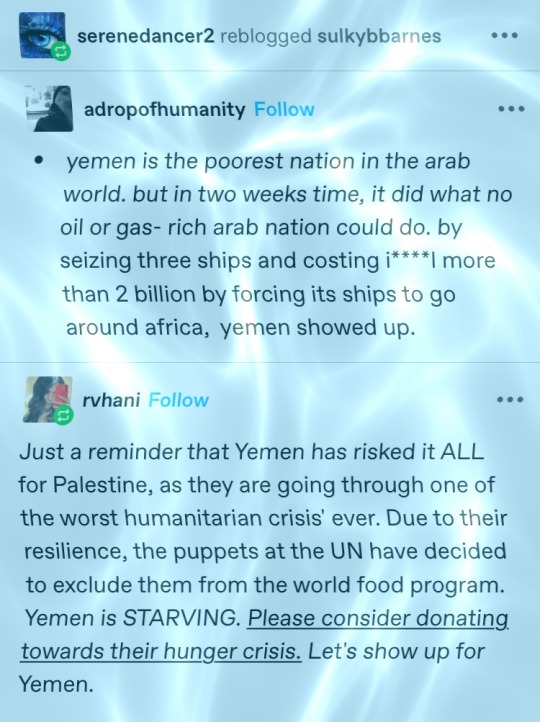
A reminder that Anti-Israel doesn’t mean “Pro-Palestinian”.
The militant faction referenced here is Ansar Allah (aka The Houthi Movement, commonly known as just “the Houthis”), a totalitarian theocracy that does not mince words about hating not just Israel, but the Jewish people. Their slogan, which they display as the symbol for their movement, is “God is the Greatest; Death to America; Death to Israel; A Curse On the Jews; Victory to Islam”.
Also no, the Houthis didn’t risk jack shit for Palestine. They’re one in a long line of militant factions who are directly responsible for the humanitarian crisis in Yemen. Abandoning their own people’s humanitarian needs to wage war isn’t a “risk” for them; it’s standard operating procedure.
The people obscuring this fact to position them as heroes for opposing Israel are engaging in dishonest, manipulative, and immensely antisemitic propaganda. (Also, like, “puppets”? Really? That’s not even subtle.) You do not even have to scratch beyond the surface of just “who is this referencing, and what is their slogan that they plaster everywhere on everything?” to know this. The fact that anyone would fall for it demonstrates gross negligence & a deep & unserious lack of curiosity on their part. There’s no excuse.
But what if you did actually spend more than 5 seconds to know more than 2 facts about the government of Yemen? Well, you might find:
There is a long history of antisemitic violence in Yemen. It culminated in 1949, and roughly 47,000 of Yemen’s 50,000+ Jews fled to Israel. A few remained, but the Houthi regime (which formed in the 90’s and is the one that is now attacking Israeli ships) is so openly, explicitly, & genocidally antisemitic that it forced even that remnant to flee.
The last Jew in Yemen, Levi Salem Musa Murhabi, is currently rotting in a Houthi prison where he has been illegally detained & tortured for the last 7+ years. Our last sign of life was in 2022, so we don’t actually know if he’s still alive.
The country that tried to murder all their Jews & continues to torture the only one that remains is now attacking the country where all those Jews went, all the while chanting “death to Israel, a curse on the Jews.” Do the math. They didn’t “show up” for Palestinians. They pulled up on Israel because that’s where all the Jews they’ve been trying to murder for years live.
2K notes
·
View notes
Text
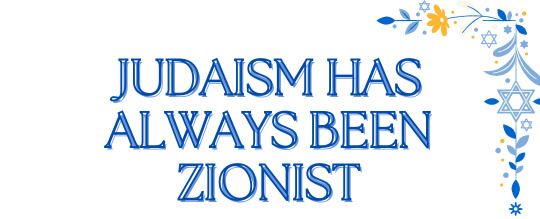
Judaism is a native religion and identity, so like all indigenous religions, it has ALWAYS sanctified the bond between the tribe and its ancestral land:
* Jews, no matter where around the world we are, pray in the direction of the Hebrew Temple in Jerusalem.
* Israel, Jerusalem, and Zion are mentioned in the Hebrew Bible hundreds of times, often in connection to the importance of the bond between the land and the Jewish people.
* The Hebrew calendar and Jewish holidays are based on the agricultural year as experienced in the Land of Israel. For example, we celebrate Shavu'ot, the Jewish festival of the harvest, during the Hebrew month of Sivan, which is roughly around the Gregorian month of June. In Australia, June is the rainiest month of the year, with severe temperature drops, absolutely not the right time for the harvest. But Australian Jews still celebrate Shavu'ot at the same time as all other Jews, around June. Because we ALL honor and preserve the agricultural cycle of our ancestors in Israel.
* Many Jewish prayers express a desire to return to Israel, for example with the phrase, "Next year in Jerusalem."
Here's a greeting card, drawn at Linz, a Nazi concentration camp in Austria, which was turned into a DP (displaced persons) camp at the end of the war. The card features the above three Hebrew words (you can see the freed prisoners of the camp on the left, heading towards a land with palm trees on the right, with one of the buildings having a Star of David on top):

* The holiest site for Jewish people in the entire world is the thousands of years old Temple Mount in Jerusalem, where the Jewish temple stood, in Israel.
* Several Jewish holidays explicitly celebrate the Zionist notion, meaning the importance of the bond between the Jews and the Land of Israel. Hanukkah is a celebration of the native Jews fighting off the Greek occupying forces, and re-establishing Jewish sovereignty in Israel, and the freedom from religious persecution this allowed Jews, by re-dedicating the Hebrew Temple in Jerusalem to Jewish worship, after it was defiled by the Greeks (including by re-lighting the Temple Menorah). Passover celebrates the deliverance of the Jews from Egypt, and the start of their journey back home, to their ancestral land in Israel, with the Passover meal ceremony including thanking God for bringing Jews back to Israel, and for building the Temple in Jerusalem for them.
* The language of the Jewish people is Hebrew, which is the last Canaanite language, the last of the languages spoken by the native peoples of Israel. Hebrew is specifically tied to the geography of Israel. For example, in the Bible, the Hebrew word for "west" is also the Hebrew word for "sea," because Israel's western border is the Mediterranean Sea. Similarly, the Hebrew word for "south" is also the Hebrew name of the desert that makes up the southern part of Israel, the Negev. Every Jewish language, which developed in the diaspora (such as Yiddish and Ladino), features words borrowed from Hebrew.
Here's an Israeli poster made in 1949, honoring "Sea Day" and featuring a part of a biblical verse (Genesis 28, verse 14): "And your seed shall be as the sand of the earth, and you will spread to the sea and to the east, to the north and to the Negev, and blessed in you and in your seed will be all the families of the Earth."

* Among the 613 Jewish mitzvahs, religious decrees that Jews must observe, one explicitly states that whenever possible, Jews should strive to live on their ancestral land in Israel. This is called in Hebrew, "mitzvat yishuv Eretz Yisrael."
* Among the 613 mitzvahs, there are 26 mitzvahs that can only be observed while living in the Land of Israel. These are called in Hebrew, "mitzvot ha'tluiot ba'aretz."
* Jewish homes have included for centuries a decorative piece hung on the eastern wall, and called "mizrach" (the Hebrew word for "east"), because that was the direction of Israel to most Jews. It usually included a biblical verse in Hebrew, often one that either mentions the east, Israel or Jerusalem, and also illustrations of Jerusalem or Israel.
Here's an 18th or 19th century mizrach from Germany:
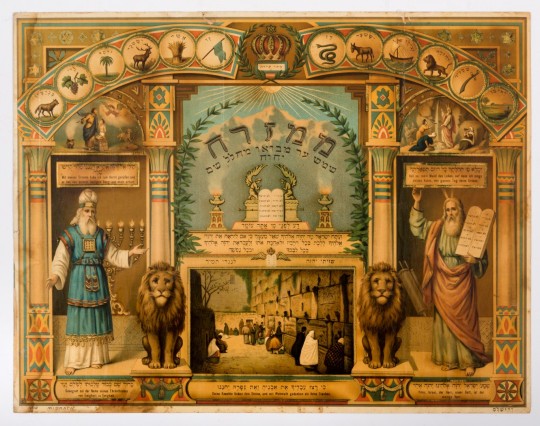
* In Jewish synagogues, especially in Europe, the eastern wall was the most important one, because it was the one facing Israel. This wall was called, "kotel ha'mizrach" which means in Hebrew "the wall of the east."
* Oh, but the word "kotel" refers specifically to the walls of the Temple Mount. For example, the Western Wall, the only one of the Temple Mount's four walls accessible to Jews for centuries (and therefore the plaza in front of it became the second holiest place to Jews, after the Temple Mount itself) is called in Hebrew, "ha'kotel" (the wall). So why would a synagogue wall be referred to as "kotel" as well? Because every Jewish synagogue is called "mikdash me'at," a lesser temple. Every Jewish synagogue is a reminder and placeholder for the destroyed Jewish Temple in Jerusalem.
* Accordingly, many Jewish synagogues feature reminders of the Beit Ha'Mikdash (the Hebrew Temple). For example, this holy ark, from a synagogue in Romania, which survived the Holocaust, and is today presented at Yad Vashem (Israel's national Holocaust museum), includes two pillars on its sides, a reminder of the Temple in Jerusalem's pillars believed to have been build by King Solomon. The holy ark's pillars are named exactly like the Temple's two pillars, Boaz and Yachin. This holy ark also features two hands, they're meant to be the high priest's, while he's performing the priestly blessing, an ancient Jewish ceremony that was conducted on the steps of the Temple in Jerusalem.

* In fact, over the centuries, one of the most prominent Jewish symbols is the menorah, which is a reflection of the candelabra eternally lit in the Jewish Temple in Jerusalem.
The Temple Menorah being stolen by the occupying Romans, as seen on the Titus Arch in Rome:

The menorah as incorporated into jewelery, as a Jewish symbol, goes back thousands of years:
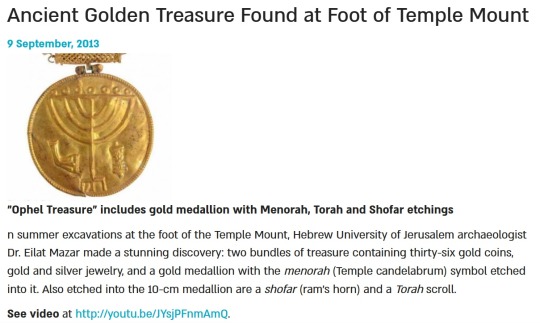
* For centuries, Jews created Jewish art and culture, which expressed Zionist longing. For example, the Sephardi doctor, philosopher and poet Rabbi Yehuda Ha'Levi writes what is maybe the most famous of the "Zion poems" while living in Islamic-occupied Spain: "My heart is in the East, and I am at the end of west / How shall I taste what I eat, and how should it be an enjoyable taste? / How shall I repay my vows and commitments, while / Zion is in the ropes of Edom, and I am in the bonds of Arabia? / It would be easy for me to leave all of the good of Spain, just like / It would be precious to me to witness the ashes of a ruined temple."
* In 1140, Rabbi Yehuda Ha'Levi finally fulfilled his wish, and boarded a ship for the Land of Israel. We don't know what happened to him, but the phrasing in a Hebrew letter, written by Jews who knew him, and found in Egypt, implies that he was murdered. For almost 2,000 years, it was dangerous for Jews to try and return to Israel, and it certainly wasn't possible on the scale of a national movement. Jews knew it was dangerous. And yet for centuries, despite that, individual Jews like Rabbi Yehuda Ha'Levi persisted in attempting this return. This is a part of Jewish history. It's not just that there was a small number of Jews, who managed to remain in Israel despite the repeated expulsions and massacres of Jews from our land, it's also that there was a small number of Jews who dared attempt the return to Israel continuously, over centuries, and neither of these things would have happened had Judaism not been Zionist. Always.
* For centuries, every Jewish wedding includes a part, where the groom recites an oath of loyalty and longing for Jerusalem. The text itself is taken from the Bible, from the second part of Psalms 137: "If I forget you, Jerusalem, let my right hand forget itself, let my tongue be glued to the roof of my mouth if I do not remember you, if I do not raise Jerusalem at the height of my joy."
* For centuries, every Jewish wedding included a symbolic reminder of the destruction of the Temple in Jerusalem, and our ancestors' following expulsion from the Land of Israel, by breaking a cup made of glass.

* For centuries, many Jewish homes featured an unfinished patch, as a similar reminder. I'm a secular Jew, but my real life bestie is religious, and her house has a hole in the eastern wall, intentionally left there.
* In fact, the destruction of the Temple, and the following expulsion of the Jewish people from Israel, is SUCH a traumatic and significant event for the Jewish faith, that there is a religious national day of mourning every year, on the ninth day of the Hebrew month of Av (the date when Jews believe the first Temple was destroyed in Jerusalem by the Babylonian occupiers, and the second one, re-built after an expulsion and return of the Jews from Babylon to their native land, was destroyed by the Roman occupiers), when Jews fast.
* Ethiopian Jews, who were probably the most disconnected Jewish community along the centuries, have a special holiday, called Sigd. This name is derived from the Hebrew word for worship or prostration, "sgida." It features asking God to return them to Israel. Since the state of Israel has helped the Ethiopian Jewish community to return to this land, starting in 1982, it has become a part of Sigd to celebrate it specifically in Jerusalem.
The Ethiopian Jewish community celebrating Sigd in Jerusalem:

* In fact, the three major Jewish holidays, other than Yom Kippur, are also called "the three pilgrimages" ("shloshet ha'regalim"), because while the Temple stood in Jerusalem, they included all Jews coming there to celebrate the holiday together. These three holidays are Sukkot, Pesach (Passover) and Shavu'ot.
Here's a piece of art depicting Jews in antiquity, coming from all over Israel to the Temple in Jerusalem for sholoshet ha'regalim:

* The Hebrew Bible itself expresses the Jewish Zionist longing, the desire of the Jews to return to their ancestral land no matter what, after they were expelled by the Babylonians from Israel, the same desire that drove their return from their first exile, as recorded in the Bible, and supported by historical documents and archaeological finds. Here's the first part of Psalms 137:
Upon the rivers of Babylon, there we sat, and we wept, as we remembered Zion. On willows there we hung our harps, because there our captors asked us for songs, and our tormentors for joy. "Sing to us from the song of Zion!" How shall we sing God's song on foreign soil?
and here's the craziest thing about this list: there's a good chance I forgot some stuff.
This is posted in honor of the first candle of Hanukkah tonight, and the many Tumblr antisemites, who distort Jewish identity and history by claiming Zionism is incompatible with or has nothing to do with Judaism, people who in the name of anti-Zionism celebrated the biggest massacre of Jews since the Holocaust, who ignore Jews pointing out that anti-Zionism is inherently antisemitic, who prove it by going out of their way to deny Jewish native rights, and who think posting "Happy Hanukkah to my Jewish followers!" (as if Hanukkah isn't a Zionist holiday) covers up their antisemitism.
Happy Jewish sovereignty in Israel holiday to all who celebrate Hanukkah! I hope you really enjoy its foods! xoxox

(for all of my updates and ask replies regarding Israel, click here)
#israel#antisemitism#israeli#israel news#israel under attack#israel under fire#terrorism#anti terrorism#hamas#antisemitic#antisemites#jews#jew#judaism#jumblr#frumblr#jewish#hanukkah#chanukah#resources
778 notes
·
View notes
Video
youtube
Traigo la camisa roxa,
trianlará lará, trianlará.
Traigo la camisa roxa,
trianlará lará, trianlará.
De sangre d'un compañeru,
mirai, mirai Maruxina, mirai
mirai cómo vengo yo.
#i wanted to put it on twitter but no one would understand#so i'm putting it here where probably no one is going to understand either#it's a traditional miner song written in memory of an actual tragedy on the mine in Asturias#in 1949#it's protest and anti-war#and it makes me think about the defenders of the Azovstal#of those who died saving the lives of thousands civillians hiding under the facility#of those who went out recently and became prisoners of war on the R*ssian side#of all the dead men women and childred who still are lying under the ruins#; nacho#; cajas de música#; al norte de mi#ukraine#azovstal#azovsteel#no war#fuck the war
0 notes
Text
I am hesitant to suggest a “descent into fascism” narrative about Israel. The State of Israel has always been fascistic in relation to its Palestinian subjects. In the entirety of Israel’s modern history, there were only a scarce few months where at least hundreds of thousands of Palestinians were not living under its martial law and military dictatorship: between the end of apartheid military rule over the subject class of Palestinians remaining after the Nakba in what became Israel (1949-1966) and the capture of the other Palestinian territories and the creation of the Israeli Military Governorate (1967 onwards). These systems of Israeli military rule over Palestinians can only be adequately described as totalitarian: through 1994, they entailed complete bans on any Palestinian political activity or freedom of expression; incarceration (often without trial or even charges) at rates far exceeding anything seen in Soviet gulags or the American prison-industrial complex; and state control over all areas of life through checkpoints, secret police, kangaroo courts, torture, and surveillance. Taken together with the racial ideology of the state, it is difficult to draw clear boundaries between the Israeli occupation regime and other fascist states historically.
Mason Herson-Hord, A Second Nakba: Paving the Way to Genocide
356 notes
·
View notes
Text


Ray Bourbon was one of the most popular vaudeville performers of the 1930s, performing both as a drag queen and as a regular comedian. He was a frequent collaborator with Mae West, having starred in both Sex and The Pleasure Man, and regularly appeared on tour with her. In 1949, he performed his act Don't Call Me Madame: A Midnight Revue at Carnegie Hall.

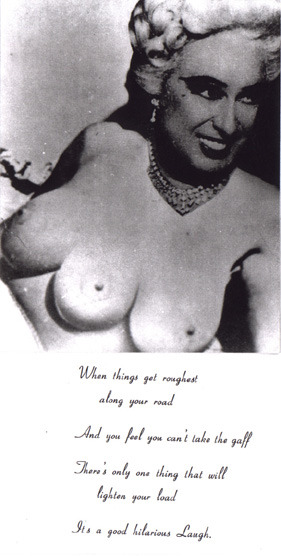
The 1950s, more and more laws began restricting drag performances, and he was arrested several times. Taking a note from Christine Jorgensen, Bourbon made the claim that he'd undergone gender reassignment surgery, and changed his name to the feminine Rae.

He built a whole comedic album around his "operation," which you can listen to here.

Bourbon's act didn't age terribly well into the 1960s. A new political gay rights movement based on respectability was underway, and Bourbon's swishy stereotype was at odds with it. Along with that, with the sexual and cultural changes of the 1960s, his act just wasn't that outrageous and shocking anymore.
Everything came to an abrupt and bizarre end when he was arrested and charged as an accessory to murder. Bourbon had been traveling across the country in a junky old car with a trailer carrying about 70 dogs towing behind it. After losing his car to a fire, Bourbon sent his dogs to the nearby Blount's Kennels, where he left them for several months. When he finally had the money to buy a new car and to bail out his "children," the owner of the kennel informed him that his pets had been given away. It's not clear exactly what happened to them, but Bourbon took it to mean that his dogs had been sold to a chemical company to be used in experiments.
Bourbon hired two young men to go look into the matter, to find out where his dogs were, and to rough up Blount. They killed him, instead. Bourbon plead not guilty, but was still convicted and sentenced to ninety-nine years in prison. He died there in 1977.
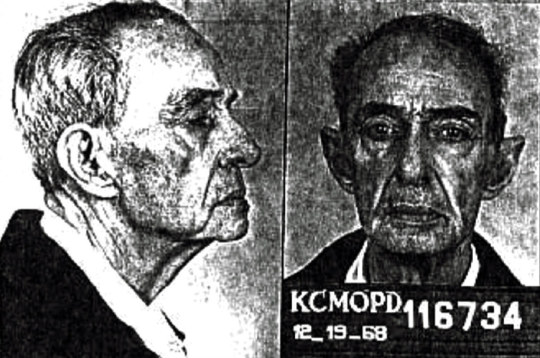
227 notes
·
View notes
Text
PALESTINIAN GENOCIDE: WAR CRIMES MASTER POST
The goal of this post is to keep track of all the war crimes as recognized by the UN's Office on Genocide Prevention and the Responsibility to Protect committed by Israeli authority and military against the Palestinian, Syrian and Lebanese people, and which remain unpunished by international authorities.
The ICC is not doing its job. It has failed its mission. It's up to us to push for Israel to be held accountable.
Feel free to comment, I'll feel free to delete the Zionist propaganda. I can't help it, I'm allergic to Nazis. Don't ask for "reliable" western media sources either; you can just open your eyes. I promise you it's better to see things as they are.
Everything under the cut is the material present on the UN's Office on Genocide Prevention and the Responsibility to Protect website as of 12/11th. Just go check it yourself if you need. Crimes in bold and red are those identified as committed. I'd love to keep tracks of numbers but... they are overwhelming. I can't. I don't think anyone can.
Paragraphs 2.c, 2.d, 2.e, 2.f and 3 are repeats of the previous but applicable to "armed conflicts not of an international character" and details to take into account in such cases. For the sake of brevity, they will be skipped and instances applicable will be reported in the previous instances of said crimes.
If you find other crimes (or victims) that need to be accounted for, please send a screenshot or a link to the source material along with the paragraph number (X.Y.Z.) and I'll be happy to oblige. You can also just bring up cases applying to a certain paragraph the same way; I don't mind a comment section filled with proof.
This post will be reblogged every 12 hours and updated when I'm able to do so.
FROM THE RIVER TO THE SEA PALESTINE WILL BE FREE.
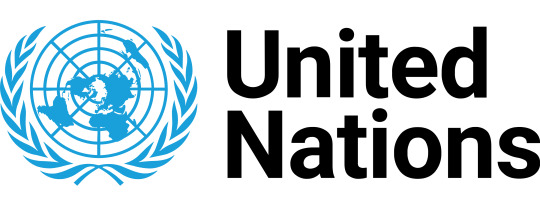

Rome Statute of the International Criminal Court
Article 8
War Crimes
1. The Court shall have jurisdiction in respect of war crimes in particular when committed as part of a plan or policy or as part of a large-scale commission of such crimes.
2. For the purpose of this Statute, ‘war crimes’ means:
2.a. Grave breaches of the Geneva Conventions of 12 August 1949, namely, any of the following acts against persons or property protected under the provisions of the relevant Geneva Convention:
2.a.i. Wilful killing;
2.a.ii. Torture or inhuman treatment, including biological experiments;
2.a.iii. Wilfully causing great suffering, or serious injury to body or health;
2.a.iv. Extensive destruction and appropriation of property, not justified by military necessity and carried out unlawfully and wantonly;
2.a.v. Compelling a prisoner of war or other protected person to serve in the forces of a hostile Power;
2.a.vi. Wilfully depriving a prisoner of war or other protected person of the rights of fair and regular trial;
2.a.vii. Unlawful deportation or transfer or unlawful confinement;
2.a.viii. Taking of hostages.
2.b. Other serious violations of the laws and customs applicable in international armed conflict, within the established framework of international law, namely, any of the following acts:
2.b.i. Intentionally directing attacks against the civilian population as such or against individual civilians not taking direct part in hostilities;
2.b.ii. Intentionally directing attacks against civilian objects, that is, objects which are not military objectives;
2.b.iii. Intentionally directing attacks against personnel, installations, material, units or vehicles involved in a humanitarian assistance or peacekeeping mission in accordance with the Charter of the United Nations, as long as they are entitled to the protection given to civilians or civilian objects under the international law of armed conflict;
2.b.iv. Intentionally launching an attack in the knowledge that such attack will cause incidental loss of life or injury to civilians or damage to civilian objects or widespread, long-term and severe damage to the natural environment which would be clearly excessive in relation to the concrete and direct overall military advantage anticipated;
2.b.v. Attacking or bombarding, by whatever means, towns, villages, dwellings or buildings which are undefended and which are not military objectives;
2.b.vi. Killing or wounding a combatant who, having laid down his arms or having no longer means of defence, has surrendered at discretion;
2.b.vii. Making improper use of a flag of truce, of the flag or of the military insignia and uniform of the enemy or of the United Nations, as well as of the distinctive emblems of the Geneva Conventions, resulting in death or serious personal injury;
2.b.viii. The transfer, directly or indirectly, by the Occupying Power of parts of its own civilian population into the territory it occupies, or the deportation or transfer of all or parts of the population of the occupied territory within or outside this territory;
2.b.ix. Intentionally directing attacks against buildings dedicated to religion, education, art, science or charitable purposes, historic monuments, hospitals and places where the sick and wounded are collected, provided they are not military objectives;
2.b.x. Subjecting persons who are in the power of an adverse party to physical mutilation or to medical or scientific experiments of any kind which are neither justified by the medical, dental or hospital treatment of the person concerned nor carried out in his or her interest, and which cause death to or seriously endanger the health of such person or persons;
2.b.xi. Killing or wounding treacherously individuals belonging to the hostile nation or army;
2.b.xii. Declaring that no quarter will be given;
2.b.xiii. Destroying or seizing the enemy's property unless such destruction or seizure be imperatively demanded by the necessities of war;
2.b.xiv. Declaring abolished, suspended or inadmissible in a court of law the rights and actions of the nationals of the hostile party;
2.b.xv. Compelling the nationals of the hostile party to take part in the operations of war directed against their own country, even if they were in the belligerent's service before the commencement of the war;
2.b.xvi. Pillaging a town or place, even when taken by assault;
2.b.xvii. Employing poison or poisoned weapons;
2.b.xviii. Employing asphyxiating, poisonous or other gases, and all analogous liquids, materials or devices;
2.b.xix. Employing bullets which expand or flatten easily in the human body, such as bullets with a hard envelope which does not entirely cover the core or is pierced with incisions;
2.b.xx. Employing weapons, projectiles and material and methods of warfare which are of a nature to cause superfluous injury or unnecessary suffering or which are inherently indiscriminate in violation of the international law of armed conflict, provided that such weapons, projectiles and material and methods of warfare are the subject of a comprehensive prohibition and are included in an annex to this Statute, by an amendment in accordance with the relevant provisions set forth in articles 121 and 123;
2.b.xxi. Committing outrages upon personal dignity, in particular humiliating and degrading treatment;
2.b.xxii. Committing rape, sexual slavery, enforced prostitution, forced pregnancy, as defined in article 7, paragraph 2 (f), enforced sterilization, or any other form of sexual violence also constituting a grave breach of the Geneva Conventions;
2.b.xxiii. Utilizing the presence of a civilian or other protected person to render certain points, areas or military forces immune from military operations;
2.b.xxiv. Intentionally directing attacks against buildings, material, medical units and transport, and personnel using the distinctive emblems of the Geneva Conventions in conformity with international law;
2.b.xxv. Intentionally using starvation of civilians as a method of warfare by depriving them of objects indispensable to their survival, including wilfully impeding relief supplies as provided for under the Geneva Conventions;
2.b.xxvi. Conscripting or enlisting children under the age of fifteen years into the national armed forces or using them to participate actively in hostilities.
#Palestine#Israel#United Nations#FREE PALESTINE#War Crimes#Palestinian Genocide#Israel is a terrorist state
322 notes
·
View notes
Text
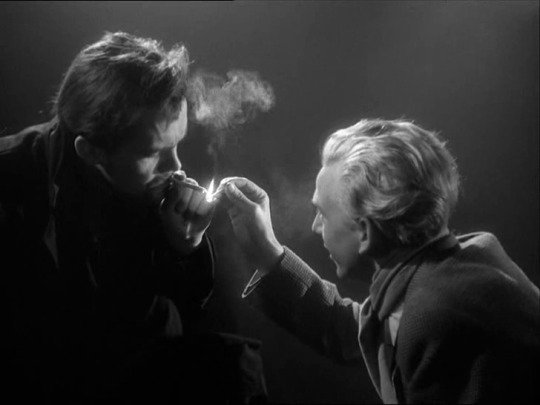
Prison (Fängelse) (1949) - dir. Ingmar Bergman
20 notes
·
View notes
Text
Atrocity created by CAPITALISM
Irish Famine (1845-1852)
Indian Famines during British colonial rule (Various, 18th-20th centuries)
Indigenous Genocide (Ongoing since colonization)
Slavery (16th-19th centuries)
Indonesian Genocide (1965-1966)
Pinochet Dictatorship (1973-1990)
Argentina Dictatorship (1976-1983)
Brazilian Dictatorship (1964-1985)
Pakistan Incident (Bangladesh Genocide, 1971)
The Gilded Age (Late 19th century)
The Great Depression (1929-1939)
Operation Condor (1960s-1980s)
Banana Wars (Early 20th century)
Batista Dictatorship (1952-1959)
Guantanamo Bay (Ongoing since 2002)
Vietnam War (1955-1975)
My Lai Massacre (1968)
Sinchon Massacre (Korean War, 1950-1953)
Kent State Massacre (1970)
Patriot Act (2001)
Red Summer (1919)
Jim Crow (Late 19th-20th centuries)
MK Ultra (1950s-1970s)
1985 MOVE bombing (1985)
1921 Battle of Blair Mountain (1921)
Malayan Emergency (1948-1960)
Mau Mau Rebellion (1952-1960)
Covert war in Yemen (Ongoing)
Stanley Meyer incident (1998)
Genocide in Turkey (Armenian Genocide and others, WWI era)
Congolese Genocide (Late 19th-20th centuries)
Greek Civil War (1946-1949)
Invasion of Cyprus by Turkey (1974)
Washita River Massacre (1868)
Minamata Disaster (1950s-1960s)
Bhopal Disaster (1984)
Kentler Project (1960s-2003)
Thomas Midgley Jr. and leaded gasoline (Early 20th century)
Forced labor in private US prisons (Ongoing)
Collateral murder in Iraq (2010)
Julian Assange and leaks (Ongoing)
US drone strikes (Ongoing)
US sanctions (Ongoing)
US support for dictatorships (Ongoing)
Korean War and civilian casualties (Korean War, 1950-1953)
Nazi funding and collaboration (WWII era)
Hitler and "Judeo-Bolshevism" (WWII era)
#communism#anarchism#marxism leninism#marxism#leftism#socialism#politics#american politics#government#republicans#us politics#conservatives#capitalism#social issues#poverty#anti capitalism#late stage capitalism#eat the rich#leftist#corporate greed#fuck capitalism#kill the rich#eat the fucking rich#fuck billionaires
366 notes
·
View notes
Text
THURSDAY HERO: Helmut Kleinicke
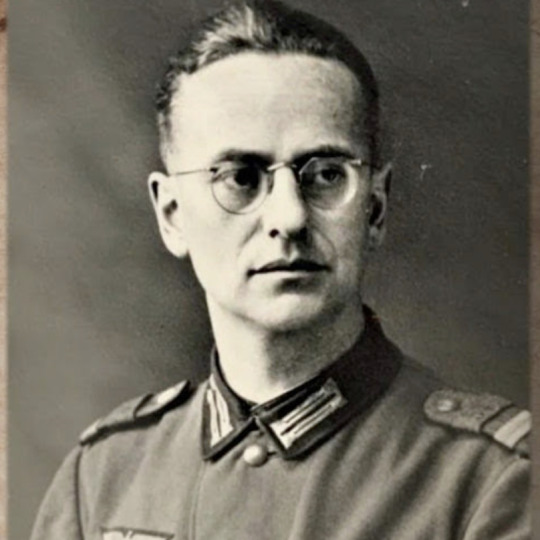
Helmut Kleinicke was a German engineer who supervised construction projects at Auschwitz while saving Jews from the gas chambers.
Born in 1907, Helmut grew up in the forest of Lower Saxony – literally. His parents were forest rangers. Helmut studied civil engineering and joined the Nazi party in 1933. In 1941, right after getting married, Helmut was hired to join the team planning the construction of Auschwitz concentration camp. He moved to Chrzanow, Poland to work on the project.
In Chrzanow, Helmut was ordered to select local Jews who were young and healthy to work on the construction site. He treated them well and didn’t allow the SS to harass them. One survivor remembered, “Those of us who worked for Kleinicke were like VIPs. We had a certificate that we worked for him, and that was our insurance policy.”
When he heard about plans to round up local Jews, Helmut located every person on the list and warned them they were about to be arrested. Then he transported many of them to the border and helped them escape. Others he hid in his attic and basement. Helmut didn’t keep track of the Jews he saved, but it’s estimated there were hundreds.
By late 1943, the higher-ups at Auschwitz noticed that Jews who interacted with Helmut kept disappearing. He was removed from his job and drafted to an artillery unit, then sent to the front lines. When Germany surrendered in 1945, Helmut was arrested by the British because of his membership in the Nazi party. While he was in prison, Jews he had saved submitted affidavits testifying that he had rescued them “without regard to his person” and that many Jews owed their lives to Helmut Kleinicke. He was exonerated in 1949. For the rest of his life, he did not talk about his wartime activities. He told his daughter only that he’d saved some Jews, but wished he’d saved more. He never considered himself a hero. In 1979, the American miniseries “Holocaust” aired on German TV. Helmut watched it and was deeply shaken. Three days after that he had a stroke from which he never recovered. He died a few months later.
Helmut’s heroism was unknown until recently. In a 2015 documentary, Josef Konigsberg, an Auschwitz survivor, testified that Helmut Kleinicke saved his life by pulling him out of a line of people being deported. This interview, and corroborating evidence that Helmut had saved many Jewish lives, led to Helmut Kleinicke being honored posthumously as Righteous Among the Nations by Israeli Holocaust Memorial Yad Vashem. The ceremony was held at the Israeli Embassy in Berlin, and was attended by Helmut’s daughter Juta Scheffzek. Also in attendance was Josef Konigsberg, who told his story of being rescued by Helmut. “I owe him my life,” said Josef, describing how Helmut rescued him from a transport line to Auschwitz: “My mother came and begged him to rescue me. Kleinicke grabbed me and said that I was his best worker.” Josef’s mother and sister were not so lucky and both died in the gas chamber. Crying as he addressed Juta, Josef said, “This is one of the most beautiful days of my life. Thank you, thank you.”
Juta was deeply touched. “It verified what my father said to me in very few words – and I never knew if he had been telling the truth.” She told the Times of Israel after the ceremony, “It was a very long and emotional search to discover the truth about my father, and I hope that people in America, the UK and Israel will hear about it.”
Israeli Ambassador to Germany Jeremy Issacharoff, who hosted the event honoring Helmut, commented, “When you’re in the context of Germany, you’re never free of the historical dimension of the Holocaust, and it’s a very heavy burden to bear for the Germans, and also obviously for the Jewish people, and it’s always there. And I think it’s really important that this type of ceremony also recognizes that there were a few really important people who did the right thing. And that, to me, is the main message that should come out of this.”
For saving Jews while his peers were killing them, we honor Helmut Kleinicke as this week’s Thursday Hero.
143 notes
·
View notes

